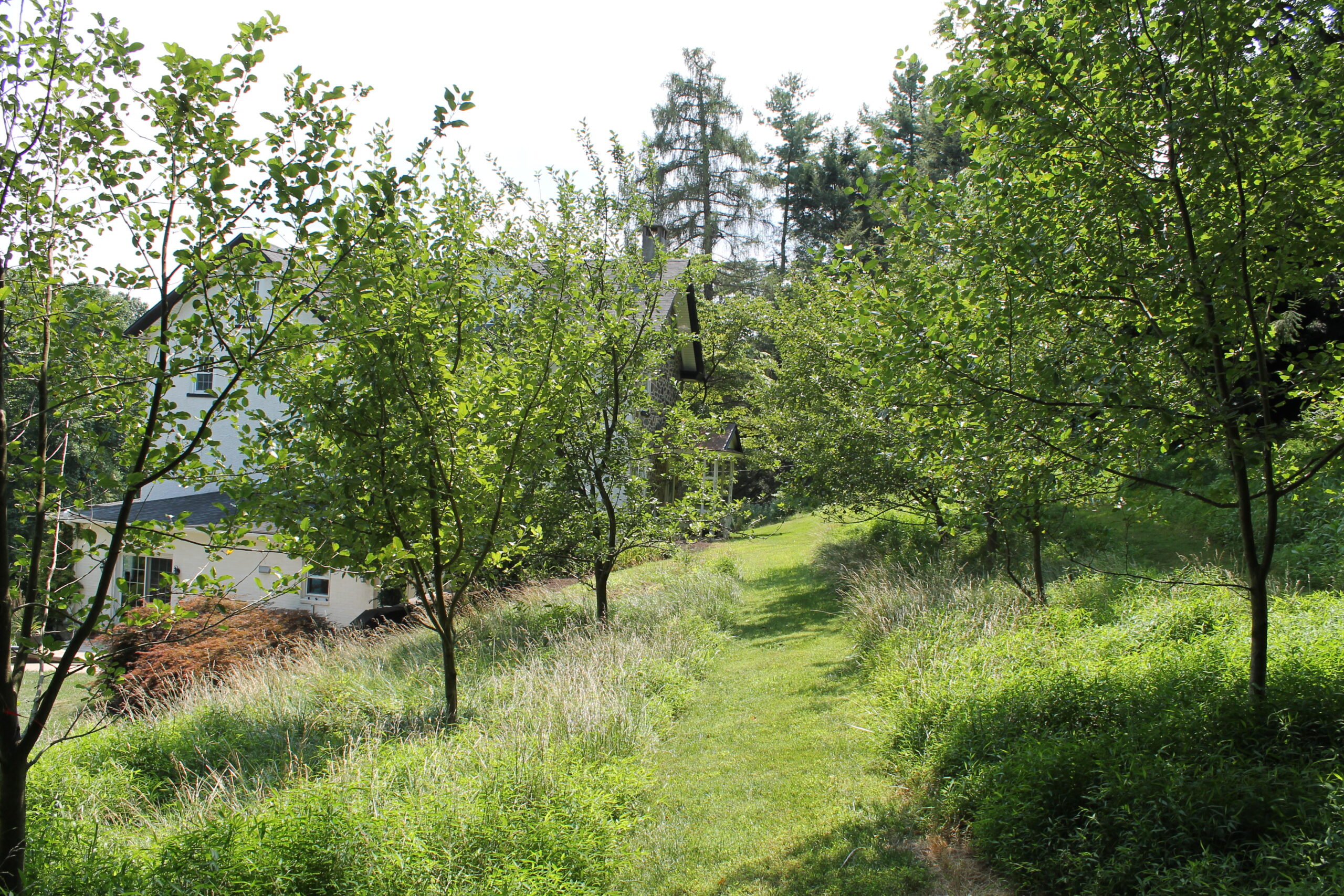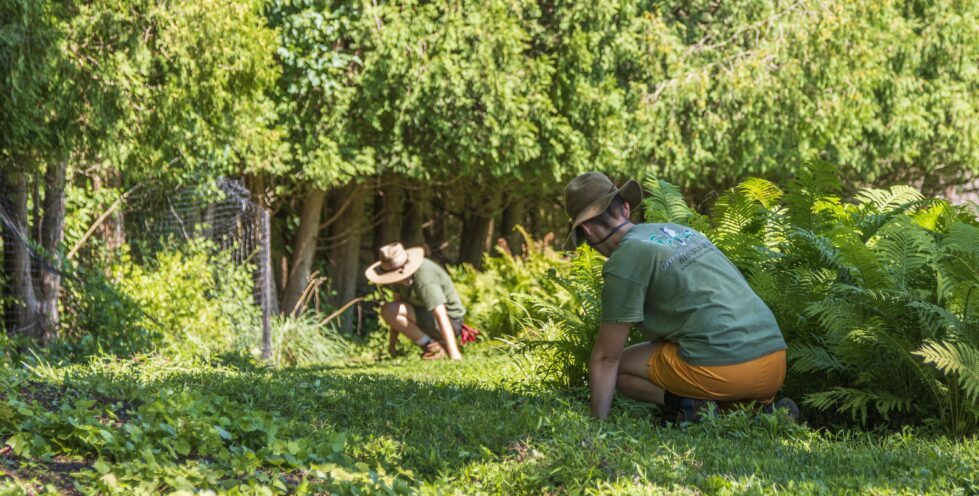Professional gardeners have developed many time saving hacks to get the most out of their efforts. Use these tips to help you work smarter, not harder, towards a beautiful, well-kept, and healthy garden.
Use the Right Tool
Good hand tools are a gardener’s best friend. For example, high-quality pruners last for years and make pruning much easier than using dull or cheap ones. Hand sickles make cutbacks a breeze, and a Hori Hori is a fantastic tool for weeding and planting. Use a tarp or lawn bag to save trips to the compost pile and reduce cleanup time.

For larger landscapes, consider power tools. Use line trimmers to control large patches of weeds instead of hand pulling. A mower or hedge trimmer can be great for perennial cutbacks in springtime and an electric leaf blower keeps long driveways tidy.
Know Your Weeds
Annual weeds last only one year and biennial weeds last two years. So, instead of pulling them, stop them from going to seed and disrupt their life cycle. An example is garlic mustard (Alliaria petiolata). Line-trim the flowering tops off this biennial and in a few years, you will see far less of them in your garden. No hand weeding necessary!
Perennial weeds grow back every year. Dig them up entirely or cut them back. If you deplete the plant of sunlight and nutrients, eventually it will die. However, for persistent perennials, you may choose chemical intervention. Just make sure you are informed about safe use of pesticides. IPM is the least toxic and safest way to approach chemical use, and of course always follow the instructions on the label.
Another trick is to tackle one weed species at a time. Once you disrupt a plant’s lifecycle you can manage large areas with little effort.
Remember that there is most certainly a seed bank in the soil which may take several years to deplete. So use well-timed control methods as the most effective way to manage weeds on your property.
Compost on the Spot
Did you know that garden waste is just compost in the making? Hide garden debris in beds and it will break down into nutrient-rich soil. Pull weeds and drop them where they are or toss them behind some shrubs where they are out of sight. Just get them before they go to seed or remove the seed heads so they don’t re-seed in the beds.
Plant Densely
Nature abhors a vacuum, so think like Mother Nature! Plant shrubs and perennials close together to out-compete unwanted weeds. Use colonizing shrubs like Itea virginica, Rhus species or Cornus sericea and underplant with perennials like Packera or sea oats. Then let nature do the rest. Try to fill different vertical layers, especially the ground layer so weeds won’t have a chance to get established.
Set priorities
When you are short on time, focus on high visibility areas. Weeding and pruning the edges is the lowest-effort, highest-impact way to make a garden look cared for.
Use Free Mulch
Fallen leaves are garden heroes, providing essential habitat and food for native insects and other wildlife. They also break down to add nutrients to your garden and improve soil structure. So, leave the leaves in your garden beds! For large amounts of leaves off your lawn, simply turn them into mulch with a lawnmower.
During spring perennial cutbacks, chop last year’s dry foliage into six inch legths and leave it in the bed. Applying hardwood mulch every year is expensive, time consuming, and wasteful, so just skip it!
Another source of free mulch is green. Encourage wild violets and other ground covers to grow in empty spaces. This “green mulch” outcompetes weeds and feeds pollinators, too!
Skip mowing
Not all grassy areas need to be mowed weekly. Areas of low use can be mowed monthly or less resulting in a more natural look. Create sweeping edges and interesting paths by selecting where to mow and where to let the grass grow. Just cut it if it gets weedy or if you want to change the layout of the area.

For larger areas, more color, and much better wildlife habitat, consider a meadow. Cut warm-season grasses and wildflower meadows annually. and are important ecosystems for pollinators and other wildlife.
Use the Right Plant in the Right Place
This is the golden rule of landscape design. Select plants for the existing space and conditions, combine them appropriately, and they will thrive. Plant vigorous plants together and save specialty plants for specific spots that suit them.
Remove shrubs that are too large and require pruning to keep them off sidewalks or below windows. Replace them with plants of appropriate size and allow them to keep their natural shape. In well-designed gardens, shearing and pruning for size is simply not necessary.
Feeling lost? Consult an experienced landscape designer!
Be consistent
Regular monitoring is critical to catching potential issues before they become major problems. Look for invasive plant species on neighboring properties to see what might try to move onto yours. And stop infestations before they become established. A monthly walk-through can eliminate hours of labor in the future.
Hire a Gardener!
If you’re still struggling to keep up with your garden, give us a call! GreenWeaver’s experienced gardening team will be happy to help.

